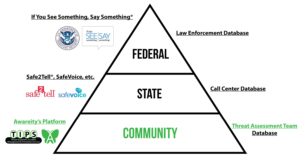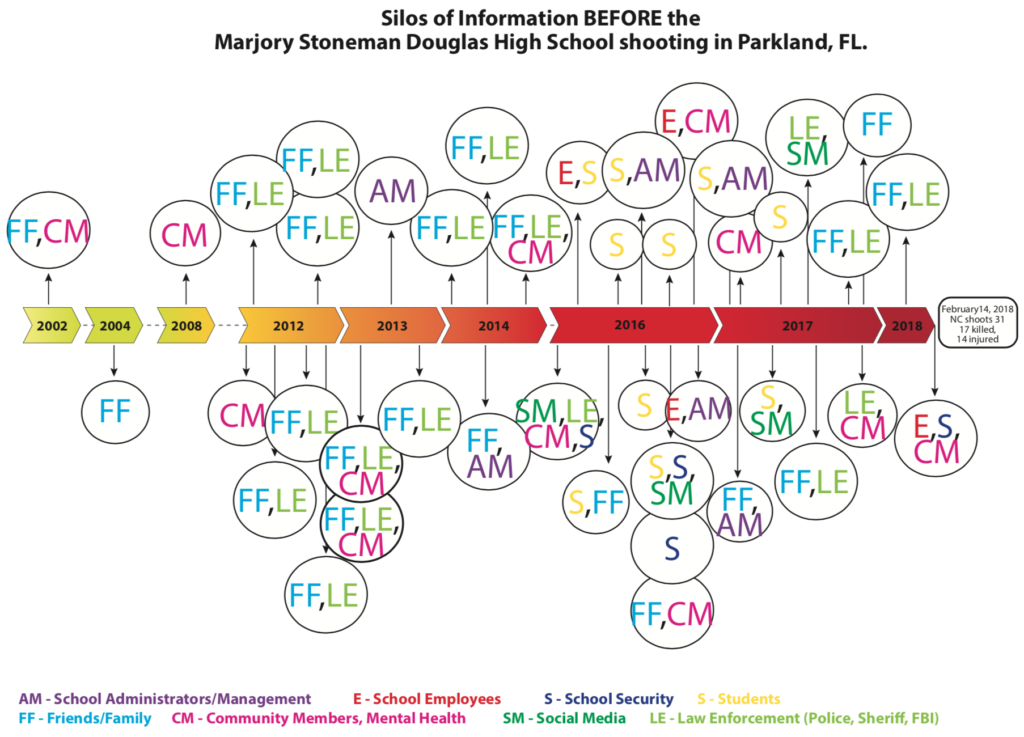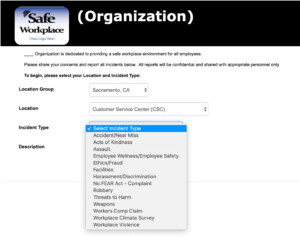6 Stages of Preventing Introduction
Do you know what the US Secret Service found while studying 41 school shootings?
All attackers exhibited concerning behaviors. Most elicited concern from others, and most communicated their intent to attack.
Yes you read that right, all 41 shooters exhibited concerning behaviors (indicators) BEFORE they attacked, so all organization and community leaders need to be asking and understanding how and why 41 different schools and communities failed in their intervention and prevention responsibilities… and if they are vulnerable to failing too?
For 20+ years Rick Shaw has been doing just that, researching hundreds and hundreds of different incidents and tragedies. It became clear that pre-incident indicators and concerning behaviors are not just associated with school shootings. Indicators and concerning behaviors are exhibited before most workplace violence attacks, sexual assaults, drug overdoses, suicides, and numerous other incidents and tragedies that take far more lives than shootings and lead to costly short-term and soaring long-term consequences.
We want to share this critical research with you, but we figured dropping 20 years of research on you would not be super helpful, so we streamlined the research into the easy to follow 6 Stages of Preventing.
Each stage plays an integral role allowing you to see what a Pathway to Prevention should look like to eliminate failures and improve prevention efforts to make everyone not only feel better but be safer as well.
Stage 1: Collecting the Dots
Stage 1 is the Collecting the Dots Stage and it is all about collecting as many indicators (concerning behaviors, red flags, suspicious activities, warning signs, etc.) from anyone (anywhere) who has observed indicators that are displayed and leaked by individuals who may be at-risk. These indicators are often at-risk individuals reaching out for help or in need of intervention actions.
Failures & challenges at this stage
Unfortunately, failures and challenges in the Collecting the Dots stage are way too common and these failures have huge negative impacts on the other stages of preventing.
 Most organization, community, and government leaders find it hard to believe that their Collecting the Dots stage could fail because they have invested in numerous incident reporting “solutions”. These “solutions” including hotlines, apps, text lines, emails and websites associated with law enforcement, abuse organizations, suicide organizations, drug organizations, gang units, pandemic organizations, and numerous other local, state, and federal government efforts that are continuously being added. However, research reveals the hundreds and even thousands of incident reporting options (including trusted adults) end up in silos and are never shared, assessed, and connected because there is no central, trusted, community-based community-wide, collection and connecting the dots platform to bring all the indicators and concerning behaviors together.
Most organization, community, and government leaders find it hard to believe that their Collecting the Dots stage could fail because they have invested in numerous incident reporting “solutions”. These “solutions” including hotlines, apps, text lines, emails and websites associated with law enforcement, abuse organizations, suicide organizations, drug organizations, gang units, pandemic organizations, and numerous other local, state, and federal government efforts that are continuously being added. However, research reveals the hundreds and even thousands of incident reporting options (including trusted adults) end up in silos and are never shared, assessed, and connected because there is no central, trusted, community-based community-wide, collection and connecting the dots platform to bring all the indicators and concerning behaviors together.

Other challenges for Collecting the Dots involve snitching concerns, lack of trust issues, no real anonymous options, and no motivation because previous incident reports were not acted upon.
Eliminating and reducing the failures & challenges
Successes (and research) reveal how to eliminate and reduce these challenges and gaps that leave indicators scattered and not acted on by schools, universities, organizations, communities, military bases, and government agencies.
The key to all the above is knowing.
Knowing about better ways to collect indicators and knowing what others know that you need to know to deliver better prevention, safety, trust, and more.
How does Awareity eliminate the scattered, disconnected, and siloed information to make your Collecting Stage successful?
It starts with the implementation process.
 When a client comes on board we help them analyze where their indicators, investigations, intervention, and other information are currently collected as well as where it is stored. The “aha moment” often comes when clients see all their silos with individuals, management, departments, systems, and locations as well as all the external silos that hold the information they need but they are not seeing.
When a client comes on board we help them analyze where their indicators, investigations, intervention, and other information are currently collected as well as where it is stored. The “aha moment” often comes when clients see all their silos with individuals, management, departments, systems, and locations as well as all the external silos that hold the information they need but they are not seeing.
Our Implementation Team then works to integrate these into Awareity’s “Connecting the Dots” Platform, where it becomes a single, and secure funnel for ALL sources of indicators, investigations, and other information which can be hundreds or thousands of sources. This streamlined approach instantly eliminates the confusion about where students, employees, community members, etc. can report concerns and share other critical information.
Then we elevate and connect other sources.
Hotlines have an important place in the Collecting Stage, but utilizing the right one that automatically connects with your single, secure “Connecting the Dots” Platform is a key differentiator. Awareity has partnered with Childhelp, a national hotline service whos operators are degreed professionals, and EVERY time a call comes in the information is automatically collected by the Awareity “Connecting the Dots” Platform rather than getting stuck in a silo.
Automating connections.
Once a report is submitted and collected (via the web, mobile device, hotline, etc.) it is immediately and automatically routed to the right team members (organization-wide or even community-wide) so they can log in to securely and confidentially see the information and take the right actions, right away.